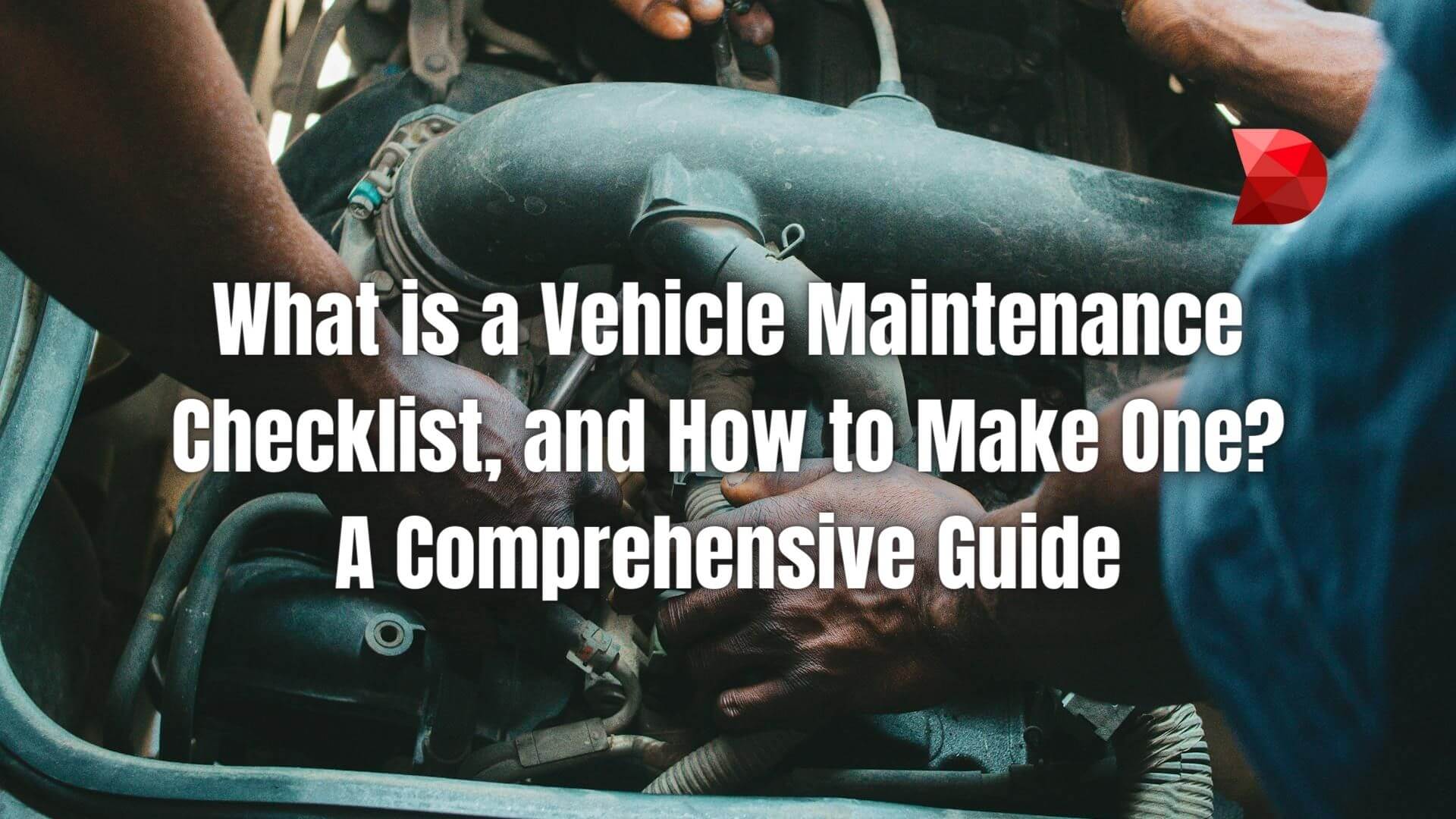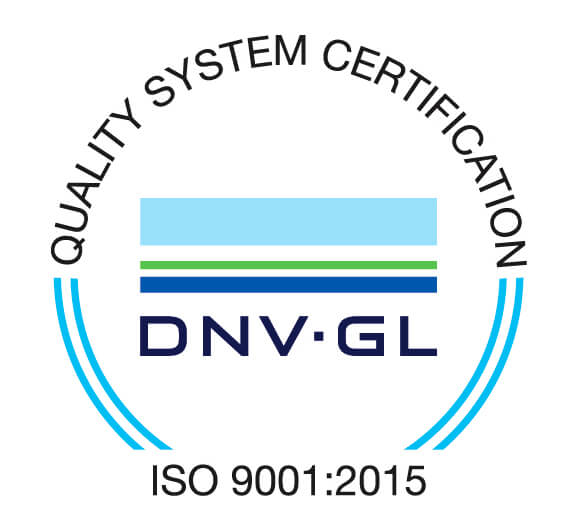Businesses that rely on a fleet of vehicles understand the critical importance of regular maintenance in ensuring operational efficiency and safety. A well-maintained vehicle not only minimizes the risk of unexpected breakdowns but also extends the lifespan of the vehicle, ultimately saving costs in the long run. Creating a comprehensive vehicle maintenance checklist is an essential step in this process. This guide will explore what a vehicle maintenance checklist entails and its benefits and provide step-by-step instructions on how to create one tailored to the specific needs of your business.
Table of Contents
ToggleWhat is a Vehicle Maintenance Checklist?
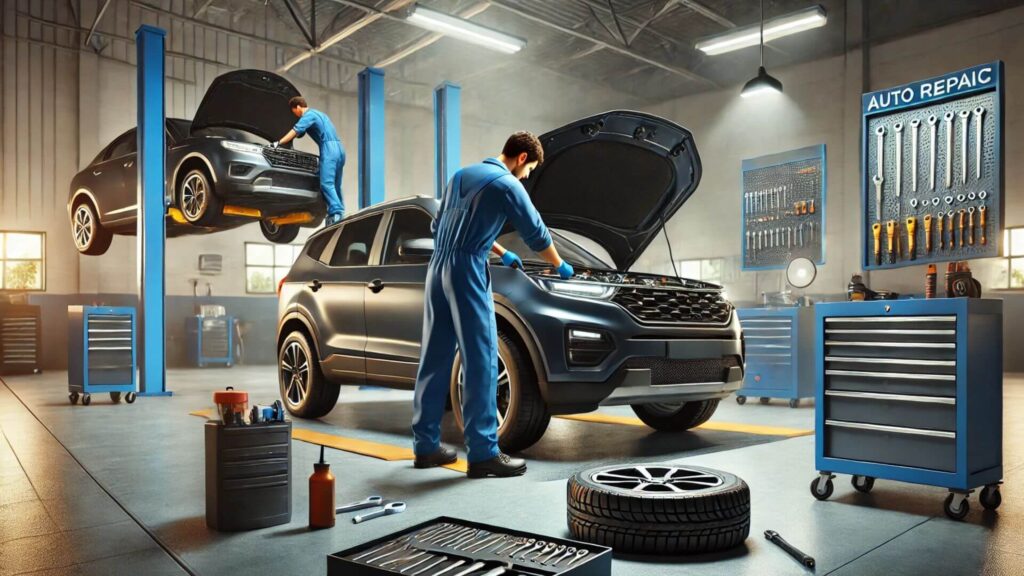
A vehicle maintenance checklist is a systematic tool used to inspect, monitor, and maintain the health and performance of vehicles within a fleet. It outlines routine tasks and specific checks that need to be conducted at regular intervals to ensure that each vehicle remains in optimal working condition. The checklist typically includes items such as checking fluid levels (oil, coolant, brake fluid), inspecting tires for proper inflation and tread wear, examining brakes, testing lights, and signals, and looking for any signs of wear and tear on components like belts and hoses. By following a vehicle maintenance checklist, businesses can proactively address potential issues before they become major problems, enhance vehicle safety, ensure compliance with regulatory standards, and improve overall fleet reliability.
Why Use a Vehicle Maintenance Checklist?
There are many reasons to use a vehicle maintenance checklist, but the most important reason is to ensure that all vehicle maintenance tasks are completed in a timely and efficient manner. Other reasons to use a vehicle maintenance checklist include the following:
- Preventative Maintenance: Regularly scheduled maintenance helps identify potential issues before they lead to costly repairs or vehicle downtime. By adhering to a checklist, businesses ensure that all preventative maintenance tasks, such as oil changes, filter replacements, and brake inspections, are completed on time. This proactive approach helps mitigate the risk of unexpected breakdowns and maintains the fleet’s operational efficiency.
- Safety Assurance: A well-maintained vehicle fleet is crucial for the safety of drivers, passengers, and other road users. By consistently following a maintenance checklist, businesses can ensure that critical safety components, such as brakes, tires, lights, and steering systems, are functioning correctly. Regular checks and repairs reduce the likelihood of accidents caused by vehicle malfunctions and enhance overall road safety.
- Cost Savings: Adhering to a maintenance checklist can lead to significant cost savings over time. Routine checks and timely repairs prevent minor issues from escalating into major, more expensive problems. Additionally, well-maintained vehicles typically consume less fuel and have a longer lifespan, reducing the need for frequent replacements and lowering the total cost of ownership.
- Compliance with Regulations: Fleet vehicles are often subject to various regulatory standards and inspections. Using a comprehensive maintenance checklist ensures that all vehicles meet regulatory requirements, thereby avoiding fines and penalties. Keeping detailed maintenance records also helps in proving compliance during audits and inspections, further protecting the business from legal issues.
- Enhanced Resale Value: Vehicles that are consistently well-maintained have higher resale values. A thorough maintenance history, documented through checklists, demonstrates that a vehicle has been properly cared for, making it more attractive to potential buyers. This can result in better resale prices when it’s time to upgrade or replace vehicles, contributing to the overall financial health of the business.
Different Types of Vehicle Maintenance Checklists
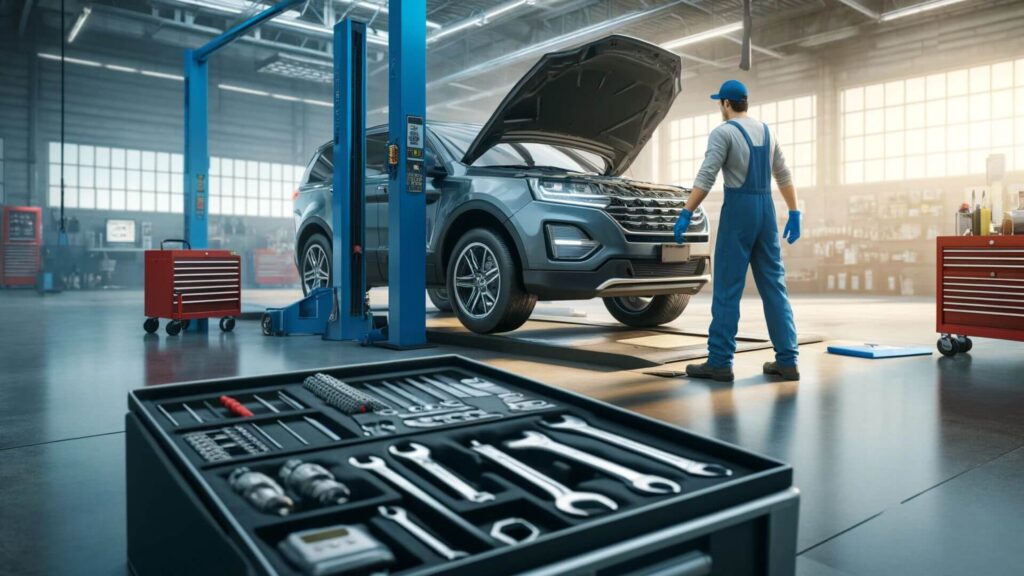
When it comes to vehicle maintenance, different check-ups are necessary based on the timeframe and changing seasons. Each type of checklist addresses specific aspects of vehicle health to ensure comprehensive care and operational efficiency. Below are three categories of vehicle maintenance checklists, each tailored to meet distinct maintenance needs: short-term check-ups, long-term check-ups, and seasonal check-ups.
Short-term Check-ups
Short-term check-ups focus on regular, frequent maintenance tasks that keep your vehicles running smoothly on a day-to-day basis. These check-ups help identify minor issues before they escalate into more significant problems. This type of checklist will serve as your daily maintenance guide, outlining tasks that you need to perform every day or week. Some notable items that appear on a short-term maintenance checklist include the following:
- Oil and Coolant Levels: Regularly check and top off engine oil and coolant levels to prevent overheating and maintain proper engine function. This helps to avoid costly repairs and ensures the longevity of your engine.
- Air Filter: Examine and replace the air filter to ensure optimal airflow and engine performance. A clean air filter can significantly improve fuel efficiency and reduce emissions.
- Tire Pressure and Tread Depth: Check tire pressure and tread depth to enhance fuel efficiency and ensure safe driving conditions. Properly inflated tires also provide better handling and a smoother ride.
- Headlights, Turn Signals, Brakes, and Parking Lights: Test all lights to ensure they are functioning correctly to maintain visibility and safety. Replacing faulty lights promptly can prevent accidents and ensure compliance with road regulations.
- Oil and Filter: Conduct oil and filter changes to keep the engine lubricated and running efficiently. Regular oil changes can prevent engine wear and improve overall performance.
- Rotate Tires: Rotate tires to promote even tread wear and extend tire life. Consistent tire rotation can also enhance vehicle stability and traction.
- Wax Vehicle: Wax the vehicle to protect the paint and reduce the risk of corrosion. Regular waxing keeps the vehicle looking new and can preserve its resale value.
Long-term Check-ups
Long-term check-ups are more comprehensive and are performed less frequently. They cover the same items that appear on a short-term checklist but also include more in-depth inspections and maintenance tasks that are needed every several months or annually. Some examples of items on a long-term maintenance checklist include the following:
- Transmission Fluid: Check and replace transmission fluid to ensure smooth gear shifts and prevent transmission damage. Regular maintenance can prolong the life of your vehicle’s transmission.
- Transfer Case Fluid: Inspect and replace transfer case fluid in four-wheel drive vehicles. This ensures that the 4WD system operates efficiently under various driving conditions.
- Inspect Shocks and Struts: Examine shocks and struts for wear and tear to maintain ride comfort and safety. Properly functioning shocks and struts also improve vehicle handling and stability.
- Coolant and Fluid Exchange: Perform coolant and other fluid exchanges to prevent engine overheating and keep various systems functioning properly. Regular fluid checks can also help identify potential issues early.
- Spark Plugs: Replace spark plugs to ensure efficient combustion and optimal engine performance. New spark plugs can improve fuel efficiency and reduce emissions.
- Serpentine Belt: Check and replace the serpentine belt to avoid engine accessory issues. A well-maintained belt helps ensure that all engine components run smoothly.
- Front and/or Rear Differential: Inspect and service the differential fluids to ensure proper drivetrain operation. This can prevent costly repairs and extend the life of your vehicle’s differential.
Seasonal Check-ups
Seasonal check-ups prepare vehicles for weather-related changes and challenges faced during different times of the year. These maintenance tasks help maintain vehicle performance and safety through varying climatic conditions. This checklist only applies to locations experiencing distinct seasonal changes, as the type of maintenance required will depend on the harshness of each season. Some examples of items on a seasonal maintenance checklist include the following:
- Replace Windshield Wipers: Change windshield wipers to maintain visibility during rain or snow. Regular replacement can prevent streaks and maintain clear views.
- Battery Performance Check: Test battery performance to ensure reliable starts and prevent battery failures. Regular checks can extend the battery’s lifespan.
- Change Tires: Replace tires with ones suited to the season, such as winter tires for snowy conditions. Proper tires enhance safety and traction on the road.
- Check Coolant Levels: Verify coolant levels to prevent freezing in winter or overheating in summer. Consistent monitoring can prevent engine damage.
How to Use a Vehicle Maintenance Checklist?
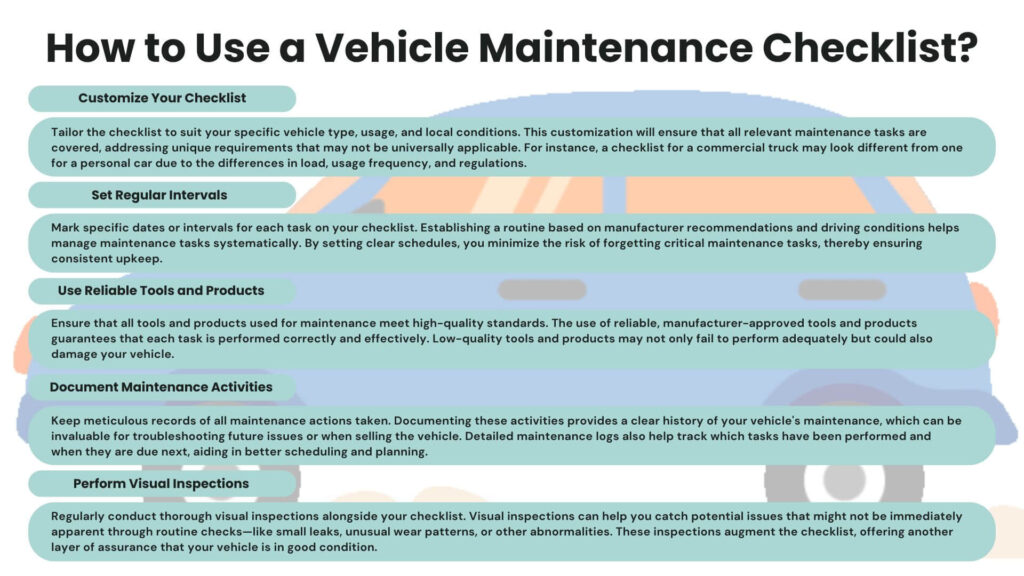
Using a vehicle maintenance checklist ensures that no crucial task is overlooked, promoting vehicle longevity and operational efficiency. By adhering to a structured checklist, you can systematically approach maintenance tasks and identify issues before they escalate. Below are five notable tips for effectively using a vehicle maintenance checklist:
Customize Your Checklist
Tailor the checklist to suit your specific vehicle type, usage, and local conditions. This customization will ensure that all relevant maintenance tasks are covered, addressing unique requirements that may not be universally applicable. For instance, a checklist for a commercial truck may look different from one for a personal car due to the differences in load, usage frequency, and regulations.
Set Regular Intervals
Mark specific dates or intervals for each task on your checklist. Establishing a routine based on manufacturer recommendations and driving conditions helps manage maintenance tasks systematically. By setting clear schedules, you minimize the risk of forgetting critical maintenance tasks, thereby ensuring consistent upkeep.
Use Reliable Tools and Products
Ensure that all tools and products used for maintenance meet high-quality standards. The use of reliable, manufacturer-approved tools and products guarantees that each task is performed correctly and effectively. Low-quality tools and products may not only fail to perform adequately but could also damage your vehicle.
Document Maintenance Activities
Keep meticulous records of all maintenance actions taken. Documenting these activities provides a clear history of your vehicle’s maintenance, which can be invaluable for troubleshooting future issues or when selling the vehicle. Detailed maintenance logs also help track which tasks have been performed and when they are due next, aiding in better scheduling and planning.
Perform Visual Inspections
Regularly conduct thorough visual inspections alongside your checklist. Visual inspections can help you catch potential issues that might not be immediately apparent through routine checks—like small leaks, unusual wear patterns, or other abnormalities. These inspections augment the checklist, offering another layer of assurance that your vehicle is in good condition.
Frequently Asked Questions (FAQs)
Q1: How often should a vehicle maintenance checklist be updated?
A vehicle maintenance checklist should be updated regularly, typically every 3,000 to 5,000 miles or according to the manufacturer’s recommendations. For fleets, consider conducting a monthly review to ensure all tasks are on track.
Q2: What should I do if a task on the checklist is consistently missed?
If a task is consistently missed, it’s crucial to reassess the checklist’s schedule or the responsible party’s workload. Consider redistributing tasks or setting up reminders to help ensure all maintenance tasks are completed on time.
Q3: Can I customize the maintenance checklist for different types of vehicles in my fleet?
Yes, you can customize the maintenance checklist based on the specific needs of different types of vehicles in your fleet. Different vehicles may have unique maintenance requirements, so it’s important to tailor the checklist to ensure proper care for each vehicle type.
Q4: Should digital tools be used for maintaining vehicle maintenance checklists?
Using digital tools for vehicle maintenance checklists can enhance efficiency and accuracy. Digital platforms can automate reminders, track progress in real-time, and store historical data for easy access and analysis.
Q5: What are the consequences of not following a vehicle maintenance checklist?
Not following a vehicle maintenance checklist can lead to increased vehicle downtime, expensive repairs, safety hazards, and reduced lifespan of the vehicle. Regular maintenance helps sustain vehicle performance and reliability.
Q6: How can I ensure compliance with the vehicle maintenance checklist?
To ensure compliance, establish a clear protocol for completing and signing off tasks. Provide training and resources for all responsible parties and perform regular audits to verify that all maintenance tasks are being properly documented and executed.
Streamline Vehicle Maintenance with DATAMYTE
DATAMYTE is a quality management platform with low-code capabilities. Our Digital Clipboard, in particular, is low-code workflow automation software that features a workflow, checklist, and smart form builder. This tool lets you create, edit, and manage checklists with ease. With DATAMYTE, you can easily customize your vehicle maintenance checklist to fit the needs of your fleet while also streamlining the process of completing tasks and tracking progress in real-time.
DATAMYTE also lets you conduct layered process audits (LPA), a high-frequency evaluation of critical process steps, focusing on areas with the highest failure risk or non-compliance. Conducting LPA with DATAMYTE lets you effectively identify and correct potential defects before they become major quality issues.
With DATAMYTE, you have an all-in-one solution for managing vehicle maintenance checklists and ensuring the ongoing quality and reliability of your fleet. Book a demo now to learn more about how DATAMYTE can help streamline your vehicle maintenance process today!
Conclusion
Creating a vehicle maintenance checklist is a simple process that can help you keep track of all the important vehicle maintenance tasks. By including all the important tasks, you can avoid vehicle downtime and keep your fleet in good working order. It’s crucial to incorporate a schedule for each task, assign responsibilities, include any special instructions, and ensure that all tasks are signed off.
These steps will not only enhance the efficiency of your maintenance operations but also extend the lifespan of your vehicles and ensure their optimal performance. Regular maintenance and diligent tracking can significantly reduce the risk of unexpected breakdowns and costly repairs, ensuring that your fleet remains reliable and safe on the road.

